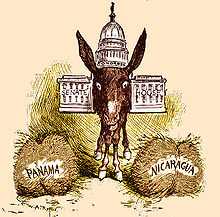Prevention paradox
The prevention paradox was first formally described in 1981[1] by the epidemiologist Geoffrey Rose. The prevention paradox describes the seemingly contradictory situation where the majority of cases of a disease come from a population at low or moderate risk of that disease, and only a minority of cases come from the high risk population (of the same disease). This is because the number of people at high risk is small.
For example Rose describes the case of Down Syndrome where maternal age is a risk factor. Yet, most cases of Down Syndrome will be born to younger, low risk mothers (this is true at least in populations where most women have children at a younger age). This situation is paradoxical because it is common and logical to equate high risk populations with making up the majority of the burden of disease.
Another example could be seen in terms of reducing overall alcohol problems in a population. Although less serious, most alcohol problems are not found amongst dependent drinkers. By achieving a small reduction in alcohol misuse amongst a far larger group of 'risky' drinkers with less serious problems, this will result in a greater societal gain than reducing problems amongst a smaller number of dependent drinkers.
The prevention paradox is a problem encountered when governments or organisations attempt to introduce a large scale intervention to improve health.
Many interventions that aim to improve health have relatively small influences and perceptible benefits on the health of most people. Therefore for one person to benefit, many people have to change their behaviour—even though they receive no benefit, or even suffer, from the change.
See also
References
- ↑ Rose G., "Strategy of prevention: lessons from cardiovascular disease", Brit Med J 1981; 282: 1847-51.
External links
- "Sick individuals and sick populations", G. Rose, Int J Epidem 1985; vol. 14, no. 1: pp. 32-38.
- "Commentary: The prevention paradox in lay epidemiology—Rose revisited", Kate Hunt and Carol Emslie, Int J Epidem 2001; vol. 30, no. 3: pp. 442-446.
- The Prevention Paradox Applies to Alcohol Use and Problems among Adolescents
| ||||||||
